JBL 4305P review: Studio monitoring for the digitally integrated home?
JBL’s powered-up bookshelf speaker pair boasts a full menu of analogue, digital, wired and wireless connectivity coupled with studio monitor sonics.
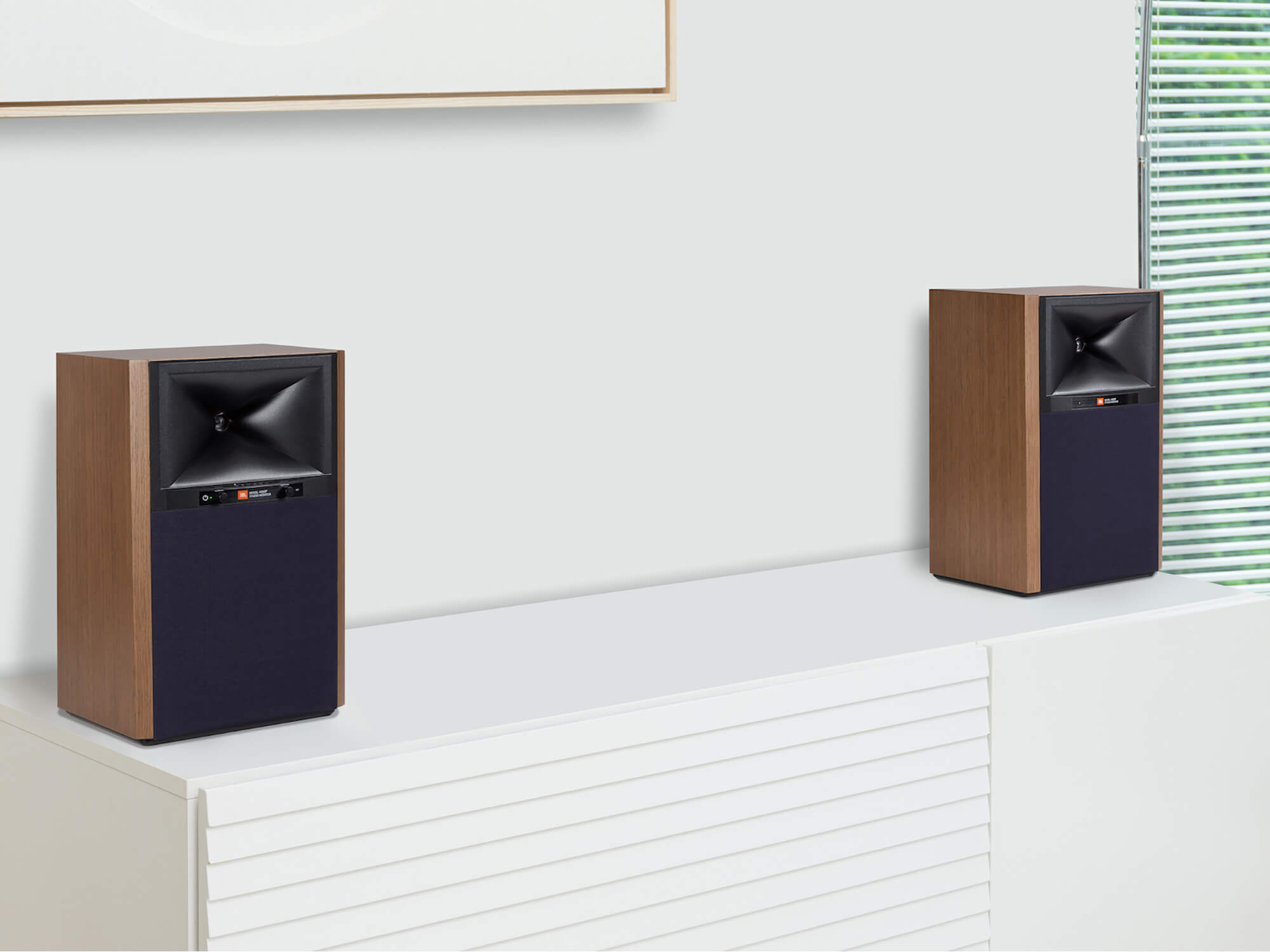
Review Overview
Our rating
7
Our verdict
⊕ A heartily robust bass and low mid response for a bookshelf speaker
⊕ Remote control for navigating the array of analogue and digital inputs
⊖ The high frequency response is a little shy, lacking a true studio grade transient detail
⊖ No room correction EQ beyond a -3dB bass shelf
JBL’s studio monitor range is, despite the name, aimed at home use, seeking to provide studio type audio in the hi-fi space. Their 4305P are the first powered monitors in this range, a common topology for, and in this case JBL have packed in 300W of Class-D across the pair.
- READ MORE: UJAM Braaas review: The epic sounds of Hans Zimmer brass in one fun and accessible instrument
These bookshelf speakers host a wide range of wired and wireless digital inputs that set them apart from their studio counterparts, making them an interesting hybrid for making and consuming music.
Digital pairing
Whether addressed via wifi (ethernet connection to router), Bluetooth, or USB, the 4305Ps provide a streaming pathway for Chromecast and Airplay, with dedicated support for MQA (Master Quality Authenticated), i.e. TIDAL Masters. The monitors come as a pair with a primary and secondary speaker: the former houses the brains and control panel and links to the latter wirelessly or through Cat5e or Cat6 cable. Both monitors use 192kHz 24-bit DACs to ensure no digital source requires downsampling before going analogue to finally push air.
Setting up is effortless, though you may need to spend time integrating and streamlining your sources so that switching between them doesn’t necessitate emergency volume drops. Source switching, as well as volume control, is provided by controls on the front of the primary 4305P, but this will see little action once the batteries are popped into the remote control provided. This also allows for muting, power toggling and basic playback controls for streaming devices/apps.
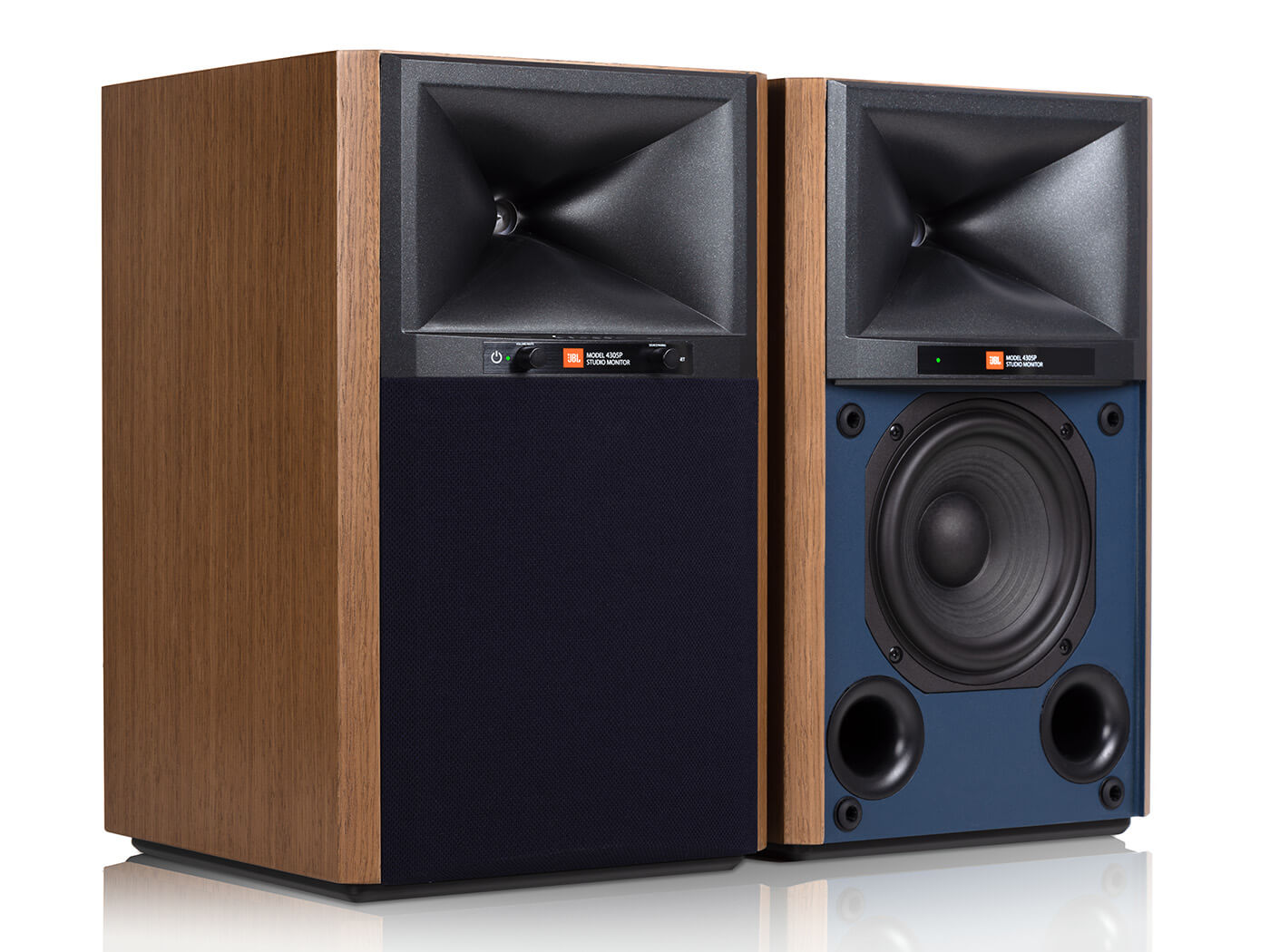
Ins and outs
The rear panel of the primary 4305P is riddled with sockets for analogue inputs (combo XLR & 1/4”), digital SPDIF (RCA & optical), USB, ethernet and the RJ-45 digital link to the secondary, but it is light on the room adaptation EQ controls that adorn the majority of studio powered monitors. Instead there is a solitary -3dB low shelving cut to compensate for the bass rise that comes with close proximity to a wall. Though this is adequate for the proximity issue it would be useful to at least have a high frequency shelf to compensate for the level of room absorption/reflectivity, especially as the variety of sources available may not provide EQ contouring that would be audibly coherent when switched between.
Low end theory
With the cloth grilles left fitted the 4305Ps draw the eye due to their expansive compression driver tweeter horns, but removing the grilles reveals a more pro-audio aesthetic as the 5.25” woofer and twin bass reflex ports are revealed. These are well built monitors that instantly impress with a fulsome bass response, somewhat counter to their size. They cut off before serious sub-bass is audible, but there is a rich and punchy thump that happily brings kick drums and bass guitars/synth into the room without upsetting their balance. Overall there is a syrupy low-mid quality to the 4305Ps, a low-mid hug that is pleasant on the ears, and coupled with a lack of harshness in the upper mids and highs makes for a quality listening experience across a wide range of genres.
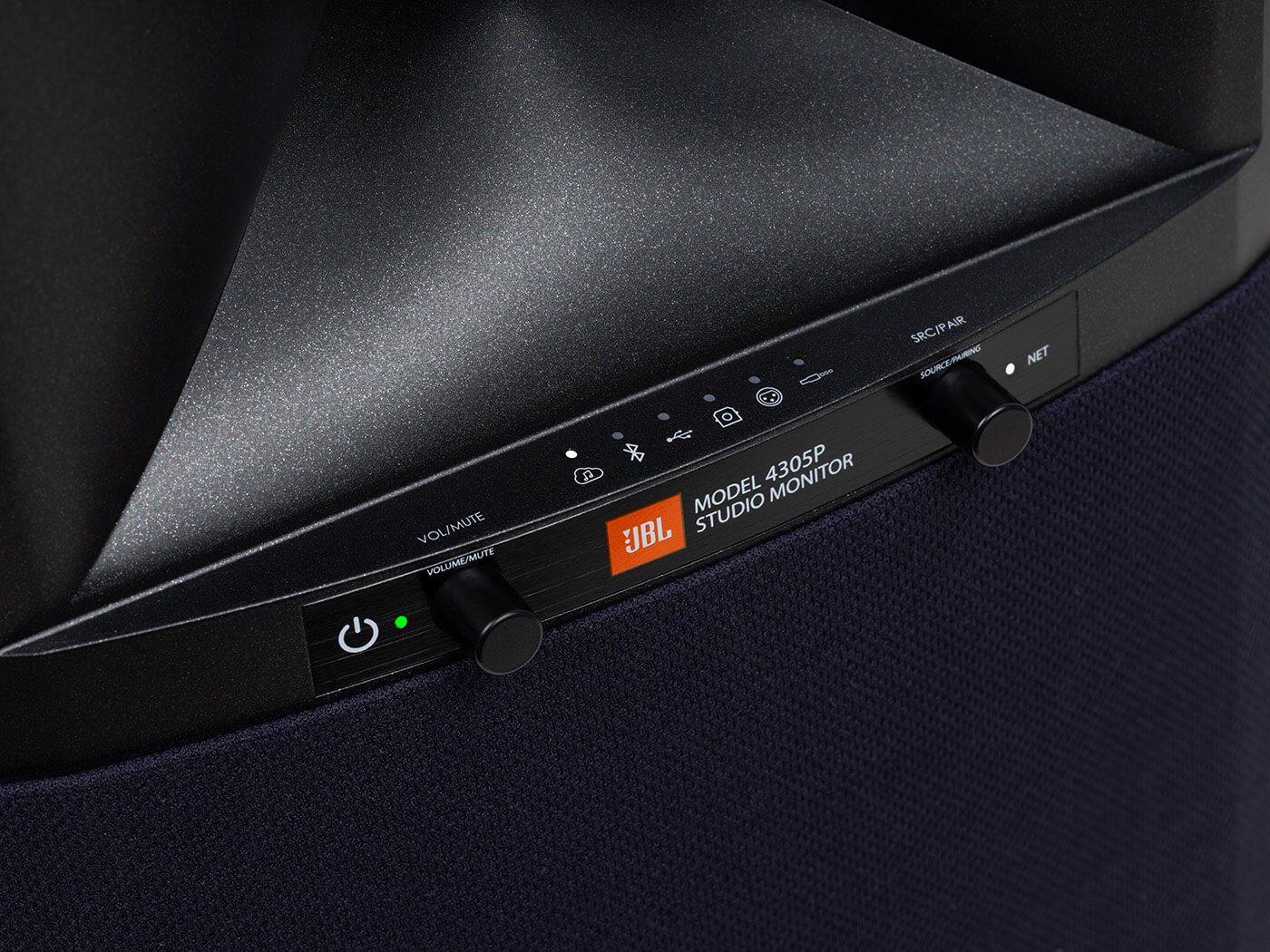
Softer-than-studio sound
JBL have avoided the studio monitor flatness, which may not always be the most gratifying aural experience, and given the 4305Ps a slight softness audio engineers associate with hifi sound systems. They are not as wearing as studio monitors can be over long listening periods (even the high quality ones can get raw), but this politeness comes at the cost of transient loss, and the resultant dialling down of detail or immediacy which is crucial not just for high frequency fidelity but also the presentation of bass, low-mid and mid dominant instruments that possess strong transient components. This high frequency information is present, just a little overly rolled off for fully translating the intricacies of not only transients but reverbs and the hiss and fizz that bring excitement to so many records. Though the 4305P sound is weighty and pleasing to the ear, it could just be a tad brighter, and in doing so be a little wider in the stereo field.
The compression drivers, and their horn baffles, are punchy and deliver well off-axis, while the crossover with the woofer below doesn’t appear to interfere with the mid frequency response, which is well defined no matter how complex a mix is being played. The two drivers are backed up by a healthy 150 watts of Class-D amplification, which in practice is plenty of power for pumping out tracks no matter how heavy they are in the bass. In small to medium size rooms by the time the protection limiting kicks in you will have already annoyed the neighbours.
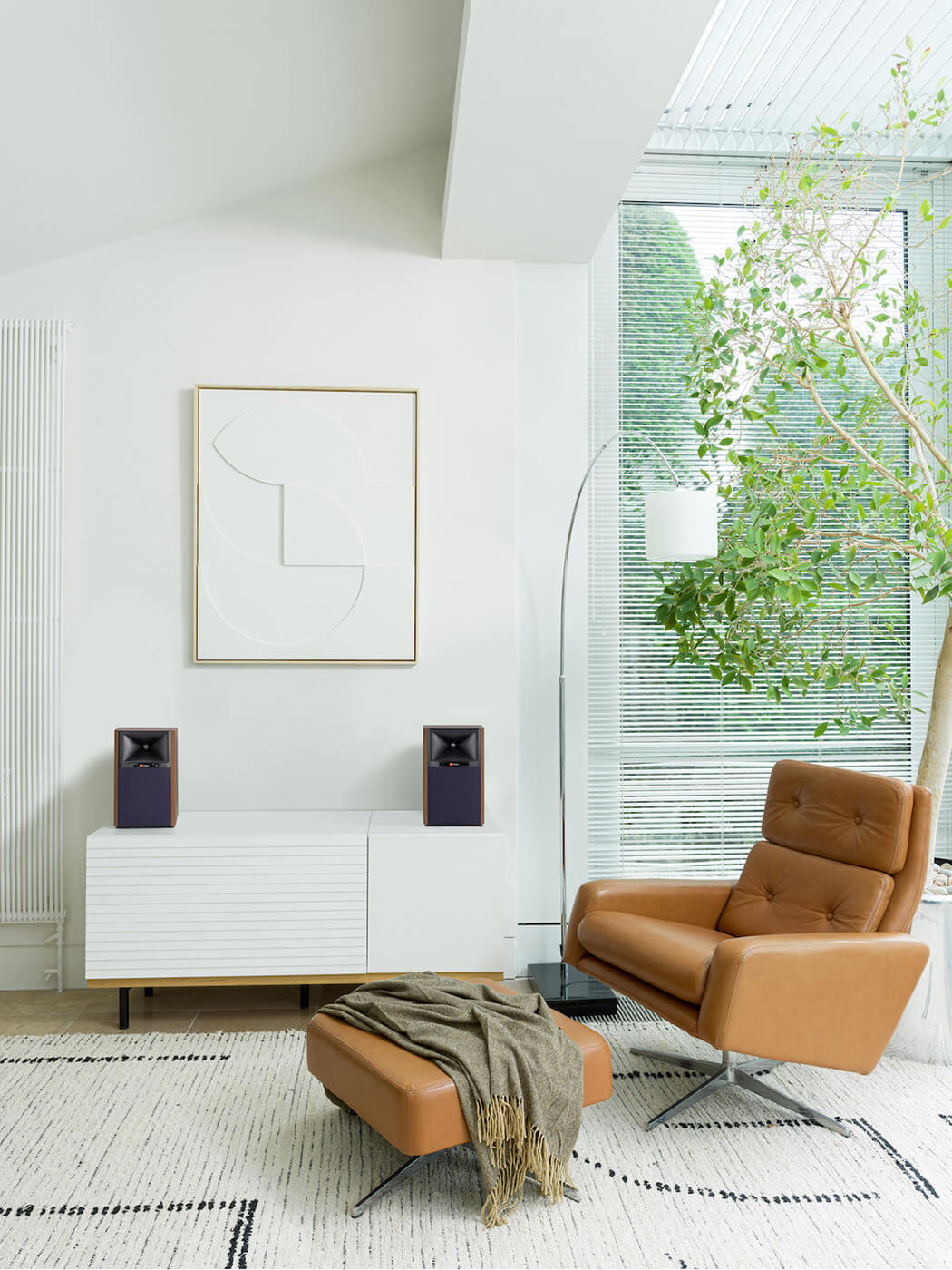
Digital host
As a front end for a host of digital streaming and analogue sources the 4305P monitors provide an admirable combination of compatibility, conversion quality and power in an easy to set up and use package. For studio engineers these could make a welcome home system with respite from the relentless rigours of untamed high frequencies, and a good reference for assessing mix translation. For keen listeners who consume audio from the myriad sources the modern era provides the JBL 4305P provides a high quality, neat and singular solution, plus enough power for a house party. This quality, and the JBL name, comes at a price that will require comparing with the combined cost of separate solutions for what the 4305P provides in one purchase.
Reference tracks
- Eleanor Rigby – The Beatles (Revolver – 2022 Mixes) – Of all the 14 remixed tracks this may be the one that has benefited most, separating out the violins/violas and cellos/basses, centring McCartney’s verse vocal and hard panning everything in the choruses. The 4305Ps allow the listener to revel in the strings’ room reflections, the dryness of the main vocal and the subtle lift the ADT brings to “all the lonely people”. To engineer’s ears there is a little extra high end activity that these mixes bring which is overly attenuated by the 4305Ps.
- Do It Again – Queens Of The Stone Age (Songs For The Deaf) – The fuzzy low mid dominance really fills the space with the 4305Ps, but the punch of the drums and articulation of the vocals is not subsumed, as muddy playback mediums can tend to do. Being a track that demands high volume the softer high end prevents this from being as fatiguing an experience as flatter studio monitors may provide, plus there is plenty of power to drum up the necessary decibels.
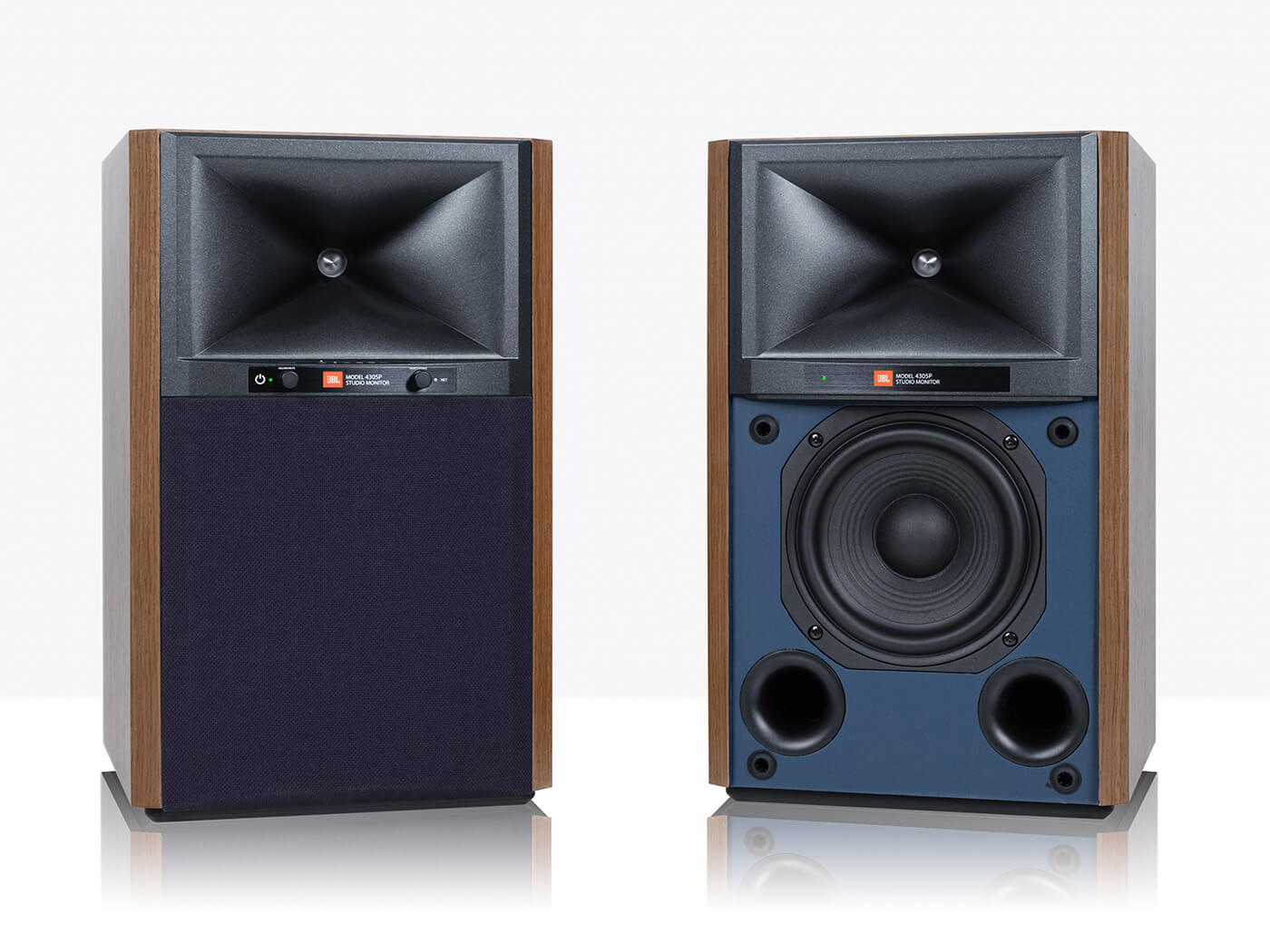
Key Features
- Two-way powered bookshelf monitors with front facing dual bass reflex ports
- 5.25” woofer (125W RMS Class-D amplifier) and 1” compression driver tweeter (25W RMS Class-D amplifier)
- Digital input via Bluetooth, USB, SPDIF (RCA & optical) or ethernet network for WiFi streaming
- All sample rates supported up to 192kHz (48kHz for Bluetooth)
- £1999
- Contact JBL
- Buy: Audio Affair, JBL